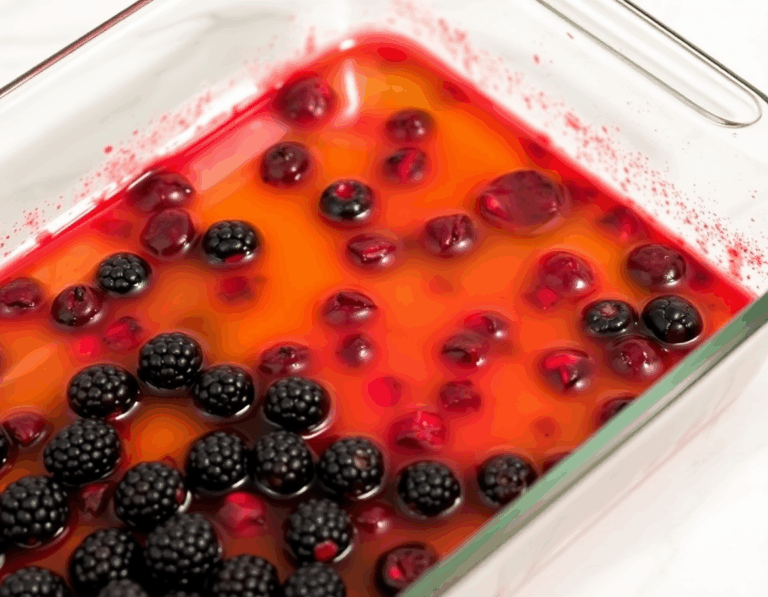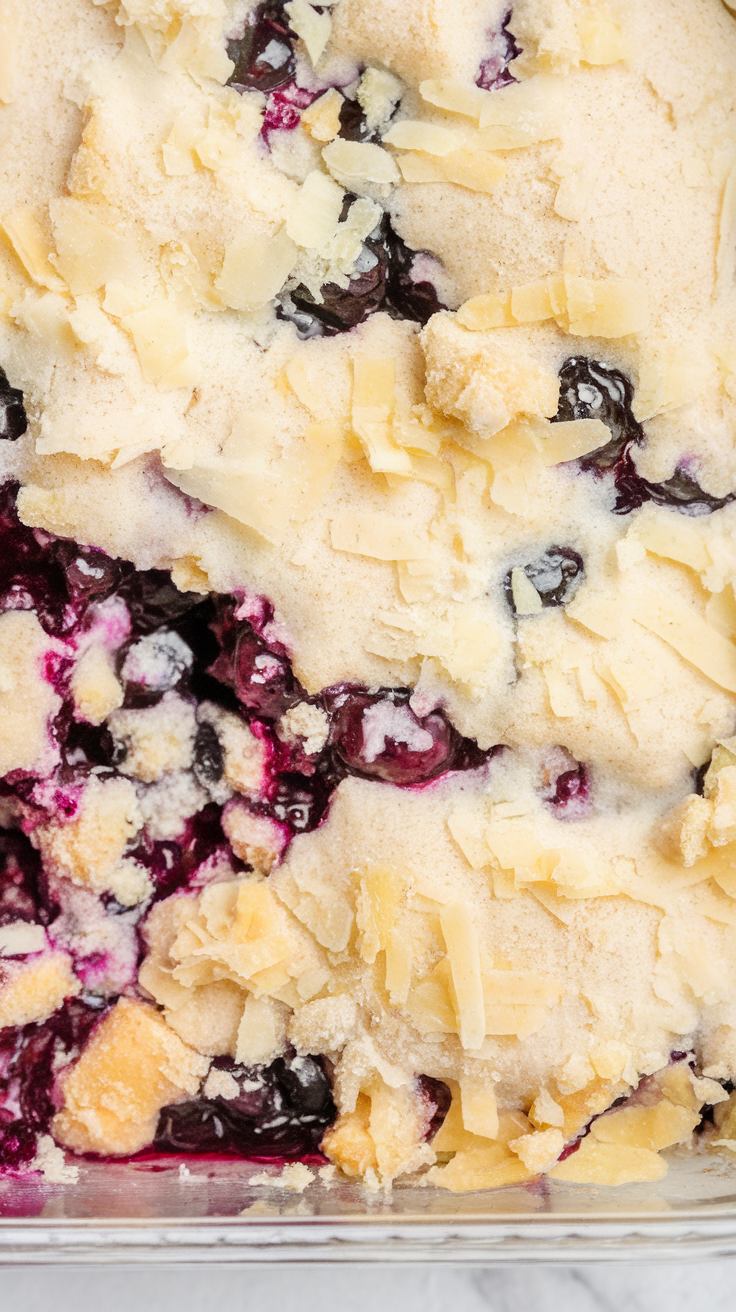Ah, blackberry cobbler—an irresistible blend of nostalgia and nature’s bounty. This sugar-free twist on a classic dessert brings the sweet tang of fresh blackberries to center stage. It’s the kind of treat that makes you forget the chaos of today’s world, if just for a moment—like a hug from an old friend.
Steps
- Preheat your oven to 350°F (175°C).
- In a large bowl, combine the blackberries, lemon juice, and your chosen sweetener. Gradually sprinkle a tablespoon of gelatin over the mixture and mix well, repeating with the second tablespoon to ensure even distribution.
- Place the berry mixture into the bottom of an 8×8 inch (20×20 cm) glass or non-stick baking pan.
- In another bowl, melt the coconut oil either in the microwave or on the stove, and then remove it from heat.
- Add vanilla extract to the melted coconut oil, then mix in almond flour, sweetener, baking powder, and sea salt until the mixture is crumbly but slightly moist.
- Spread the crumbly dough over the berries in the pan, leaving some gaps for the berries to show through.
- Bake the cobbler for 25-30 minutes until the top turns golden brown. Allow it to rest for at least 10 minutes before serving, or let it cool to room temperature for a thicker consistency.

Ingredients
- 4 cups fresh blackberries
- 2 tablespoons lemon juice
- 2 tablespoons granulated sweetener of choice
- 2 tablespoons grass-fed beef gelatin
- 1/4 cup coconut oil, melted
- 1 teaspoon vanilla extract
- 1 1/2 cups almond flour
- 1/4 cup granulated sweetener of choice
- 1 teaspoon baking powder
- 1/4 teaspoon sea salt
Nutritional Values
Calories: 1359 | Fat: 114.3g | Protein: 42.3g | Total Carbs: 71.1g | Net Carbs: 35.1g | Fiber: 36g | Sugar: 27.9g
FAQ
- Can I use a different fruit instead of blackberries in this cobbler recipe?
- Yes, you can substitute blackberries with other berries such as blueberries or raspberries, which also work well in low-carb desserts.
- What can I use if I don’t have gelatin for thickening the cobbler?
- If gelatin is not available, you can look for other cornstarch substitutes to help thicken the filling, though the texture may vary slightly.
- Why does the crust need to have blackberry gaps?
- Leaving areas of blackberries visible through the crust is a signature feature of any good cobbler. It allows the berries to peek through, adding to the visual appeal and texture.
- Is it better to serve the cobbler warm or after it has cooled?
- This depends on personal preference. The cobbler thickens as it cools due to the gelatin setting. You can decide whether you prefer the thicker consistency of a cooled cobbler or the more liquid, warm version.
- Can I store this blackberry cobbler for later use?
- Unfortunately, this sugar-free blackberry cobbler does not store well, so it’s best enjoyed fresh after it’s made.
Tips
- Sprinkle the Gelatin: When adding gelatin to the blackberry filling, sprinkle it gradually instead of dumping it all at once. This prevents clumping and ensures even distribution throughout the mixture.
- Mix the Crumble Thoroughly: The crumble topping may initially seem dry. Continue mixing and pressing with a spoon until it comes together, remaining crumbly but cohesive enough to hold together when pressed.
- Leave Some Berries Exposed: When adding the crumble topping, leave some areas of blackberries visible. This not only gives the cobbler an appealing look but also helps the flavors meld together.
- Consider Cooling Time: Decide on the consistency you prefer before serving. The filling thickens as it cools due to the gelatin, so if you prefer a thicker cobbler, allow it to cool completely. For a warmer, more liquid version, serve it sooner after baking.
Equipment
- Vital Proteins Grass-Fed Beef Gelatin
- 8×8 inch (20×20 cm) glass or non-stick baking pan

